Well insulation: methods and work
The owners of wells in our country all face the problem of freezing of the water supply system in the winter. The solution to this problem is obvious: the design must be carefully insulated.
Our story about how to do it yourself, and what materials it is better to use.

Water well insulation
Special features
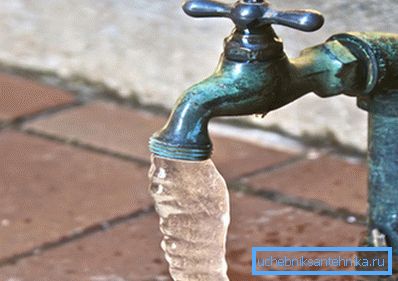
To make the system of isolation of the well from frost more effective, one should understand the features of this system:
- The main distinguishing feature of thermal insulation of a water source is its necessity.. The fact is that the lack of insulation will not only create discomfort or make the water too cold - this will lead to pipe rupture and the exit of the water supply system from the well, and the consumer will remain without water for a long time;
- Also important feature of warming is a temperature mode.. Here, unlike other scopes of thermal insulation, it is enough to maintain a positive temperature, because everything that is above zero degrees is not terrible for the aqueduct;
- Another characteristic feature of our system is its area of location.. It is senseless to insulate parts that are below the level of soil freezing, because our task is not to warm the water, but to keep it in a liquid state;
- Finally, the shape of the warmed surfaces is different.. Here, these are mainly cylindrical surfaces of pipes and casing, as well as concrete rings of a caisson well. If the well is in the technical room, then the insulation is produced according to the standard scheme - the outer surface of the walls is covered with material.

Considering the listed features, several important conclusions can be drawn:
- In connection with the need, the insulation should be thought out at the design stage, in order not to expose the system to the risk of breakage, and also not to dig out the entire pipeline and casing in force majeure mode;
- Since most parts of the system are located underground, the heat-insulating layer should be protected from ground moisture and the pressure of the earth masses. This is done with the help of corrugations and housings, as well as double pipes and dense insulating materials;
- Due to the cylindrical shape of the surfaces, it is better to use rolled, soft or specially stamped materials. Increased humidity involves the use of moisture resistant insulation.

Note! Competent design of the system will minimize the risk areas, and it will be necessary to insulate small segments located close to the surface of the earth.
Materials
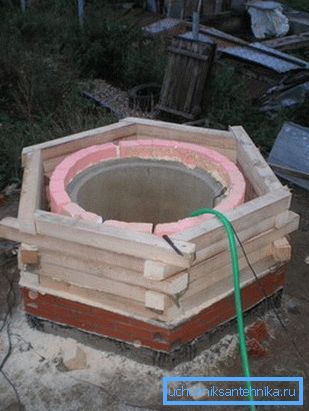
Many advise the use of natural insulation, such as sawdust, leaves, straw, or peat. Of course, the price of such materials tends to zero, but their effectiveness is not much ahead of the cost.
This is not even due to thermal conductivity, which is significantly higher than that of synthetic and artificial materials, but the ability of organic substances to decompose under the action of moisture and microorganisms, which are more than enough in the soil.
In addition, bulk natural materials absorb moisture like a sponge, and wet insulation instantly loses its effectiveness.
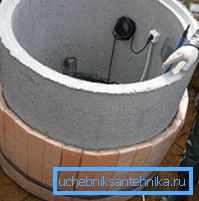
Therefore, we recommend the use of reliable durable tools, and they are mostly unnatural.
Here is a short list of suitable materials:
- Extruded polystyrene foam or foam. Not afraid of moisture, durable enough, does not rot, does not corrode, retains heat well;
- Polyurethane foam. Possesses excellent adhesion to surfaces, creates a continuous tight seamless layer, does not pass moisture and does not need waterproofing, is durable and durable;
- Mineral or glass wool. These materials also do not rot, have a very low thermal conductivity and serve for a long time, but they absorb moisture and require a protective casing, as they can be crushed;
- Various foamed polymers: penoizol, polypropylene foam, polyvinyl chloride foam and others. All plastics resist moisture and do not rot, but many need mechanical protection because of their softness and crush.

Note! Since the total area of heat-insulated surfaces is small, it is better not to save on materials and make high-quality and effective protection of the pipeline and the well from frost.
Manufacturing jobs

For those who are interested in self-installation of insulation, we have prepared step-by-step instructions.
We consider a system without a caisson, which is mounted without insulation:
- In the warm season we dig up the casing to the depth of soil freezing with a small margin (200 - 400 mm);

- We also dig out the external pipeline and the places where the pipes enter the well and the house;
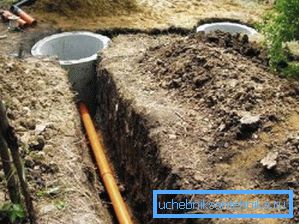
- We buy at a hardware store or make custom-made foam parts that repeat the shape of the casing string. We glue these parts to the column with the help of polyurethane foam, all the gaps are blown out. Especially carefully seal the upper end of the casing so that the moisture does not penetrate under the layer of insulation;
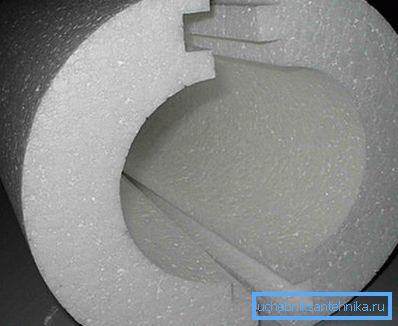
- We wear pipes with insulating cylinders made of polystyrene, the gaps and joints are also zapenivaem;
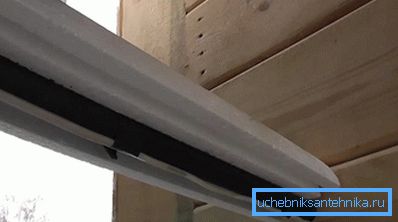
- The places where communications enter the building and the well are sealed and wrapped with mineral wool, which is covered with polyethylene or foil;

- The casing pipe is closed with a tight insulated lid for the well or we construct a coffered well around it. You can also build a wooden shelter or build a small shed above the source.
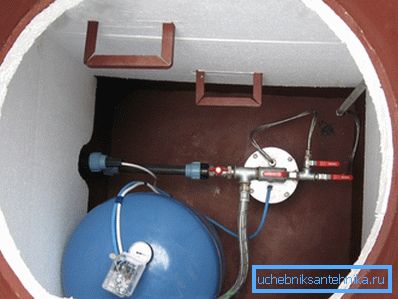
Note! The well pipes that are located below the level of soil freezing may not be warmed, but the risk of a too high temperature decrease for your area remains, therefore, reinsurance will not be superfluous.
Conclusion
Well insulation for the winter in the Russian climate is a necessary measure of security of the water supply system. It is not difficult to perform work on the thermal insulation of pipes and casing, especially when there is a detailed step-by-step guide. To clarify the nuances we bring to your attention the video in this article.